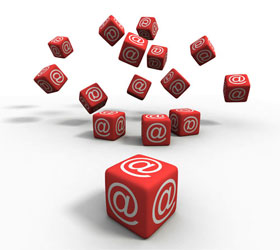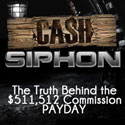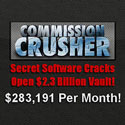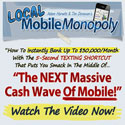Exploring the Metrics of Email Marketing
Posted on January 10, 2012 by CJ Article Team

Learning how to better understand your email marketing campaign is the first step to making it work harder; delivering more positive reception, more sales, and of course, more revenue.
There’s a slew of email marketing metrics and it’s vital you are confident in cutting through to the metrics that matter most, and how to use them to improve your email campaign performance.
Delivery Rate
Delivery Rate is most often derived from how many emails were originally sent out minus the number that were bounced back. Makes perfect sense doesn’t it? However, it offers no further advice on whether the email was deleted immediately by a spam filter, or diverted into a spam or junk folder. It’s important to remember that email clients like Gmail have the ability to recognize and label familiar communications as spam without ever alerting either the sender or the recipient.
What can you learn from this?
· A percentage of all delivered email WILL end in a junk folder and you’ll never know about it.
· Thus there will never be an official unsubscription from the recipient because chances are they’re not even aware they have received anything from you.
Bounce Rate
Bounce rate is the exact opposite of delivery rate, although it’s often split up into hard bounces and soft bounces. Bounces of the hard variety are being sent to an email address that doesn’t exist; like sending a letter to a completely fictional address. If the domain or recipient isn’t recognized, the email will be returned to the sender. Soft bounces can occur for a number of reasons such as when the recipient’s inbox is full. This doesn’t happen very often these days except in the cases of free services like Hotmail and Yahoo.
· Remove hard bounce addresses as soon as possible to reduce wasted budget, but don’t delete them from your records.
· You should be aiming to reduce your email marketing bounce rate to make your campaigns more effective overall.
Unsubscribe Rate
Many of the reasons why people unsubscribe from email marketing lists is down to how you got their email address in the first place. There are three general ways to procure email addresses:
Buying a list of emails – When you send your email communication out to a cold list of people who have never heard about you, be prepared for a significant unsubscribe rate.
Compiling a list from your previous customers – Unsubscribes from previous customers on your database can mean you are sending too many emails and none of them are of any particular interest to your recipient base. Unless you have some real news worthy of telling your customers or you have a significant offer that doesn’t insult them, I’d seriously reconsider if you need to send that particular email creative you’re working on.
Opt-in emails – An unsubscribe from these guys is far more telling. If they signed up in the first place then perhaps you are bombarding them too much, or they have received some unacceptable service from you recently.
· Use a form on your unsubscribe landing page to offer people the chance to tell you why they have decided to remove themselves from your marketing list. Be prepared for some cutting remarks.
· Find ways to top up your email base (your recipient list) to counter the effect of unsubscribes and provide the opportunity to engage a wider audience.
· Don’t treat low unsubscribes as a measure of recipient interest; use more active metrics like opens, clicks and conversions instead.
Open Rate
The Open Rate is a bit of a misleading metric… use it with care. It doesn’t show you how interested potential customers are in what you have to offer, and it’s certainly no indication they are a gentle nudge away from actually clicking through to your website.
Most email clients (Hotmail, Gmail, Thunderbird, Outlook etc.) display a snippet line which needs to be clicked on to load the full content of the email, which will usually contain a piece of tracking code or pixel image that allows the sender to get reports back. What this actually means is that the recipients email client displayed this code; nothing more, nothing less. However, as long as you understand this, it’s still the best indication we have of judging how many human readers actually opened the email.
· The open rate tracking can be activated without the user ever having read the email.
· Identify those customers who never open your emails and send them a completely different type of offer, something you’ve never tried before! It’s a great way to try out your ideas on an audience that won’t negatively affect your sales figures and you never know: you might just discover a way of reaching a new type of customer for your business.
· If you’re paying for your email marketing on a per email basis, and the above tip doesn’t work, delete these non-responders from your mailing list and reduce your budget.
Click-through Rate
Now we’re cooking! This metric starts to give us some solid insight into how interested the target audience is in your product or price (or story if you run an informational website). Industry sectors can experience wildly different click-through rates, ranging from an average of 57% in the restraurant sector to 5.7% in the automotive sector (source Harte-Hanks Postfuture Index(TM) for January-June 2006), and it’s often a sign of how saturated the email marketing arena is in your chosen industry, and how loyal customers are within that market.
Aim for the highest click-through rate as possible by including a clear and compelling call to action in your email communication; don’t trust the recipient to decide the next course of action. What constitutes a compelling call-to-action is down to your understanding of your audience and market but here are some examples from my experience:
· Buy 1 Get 1 Free Voucher Code – Ends at midnight!
· Enjoy 25% off your regular purchases – Click here to order before we run out of stock!
· Send this offer to your friends and earn a $5 gift voucer with one who signs up to our program.
· Call us for a free, no obligations chat on 0800 123 444 to discuss your policy
Notice, Grasshopper, how retail calls-to-action often rely on two elements to encourage email click through: an good offer and a compelling deadline. You can develop this even more by including personalisation to really connect with your customers on a individual level. If you employ these tactics, make sure your landing pages are ready to convert this traffic and deliver on your promises – otherwise your readers may feel conned and your unsubscribes will rocket.
Conversion Rate
The term conversion isn’t necessarily limited to securing a sale online. It can mean any goal that you define as a secured milestone of customer engagement: email signups, brochure downloads, calls in to the business, installed firefox addons… they’re all conversions to various industries. Most ecommerce businesses will consider straight up purchases as conversions, and email marketing is a proven way of boosting sales and revenue.
Conversion rate depends on many factors coming to together on your landing page to bring the customer to the point where they are willing to commit to a purchase:
Timing
8am on a Monday morning isn’t a great time to launch your email campaign. Similarly schools won’t respond outside of term time.
Pricing
Get this right and customers will forgive a lot of mistakes. Remember, email marketing is not the place to shout about your average pricing policy.
Relevance
Dear old Mrs. Ogden probably isn’t going to be interested in a 18-30 holiday to Ibiza. Match your message to your database for an instant conversion quick win.
Urgency
If you decide upon an arbitrary deadline for an offer or voucher code you must stick to it ruthlessly. The next time it happens people will know it’s for real.
Trustworthyness
You have literally seconds to convince your potential customer that you’re legitimate and credible. Red Comic Sans and premium call numbers are a definite no no.
Call-to-Action
Tell your customer what you want them to do next. People don’t like to think on the internet so give them a clear direction what to click, call or download.
Article Source: http://EzineArticles.com/1784894
Facebook Comments:


































